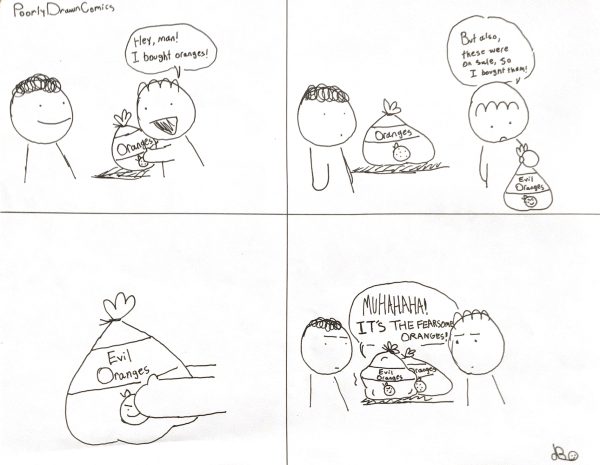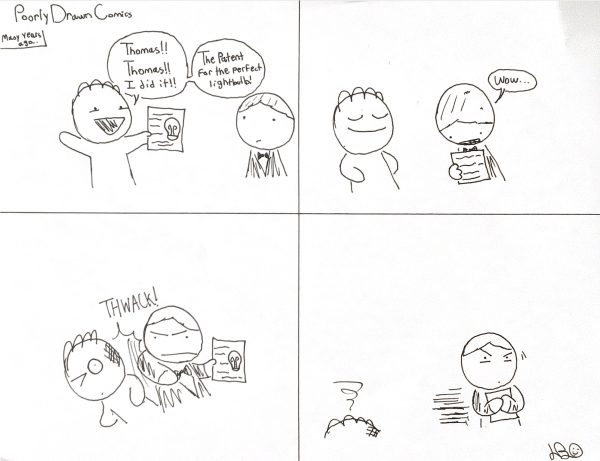iPads: the future of education?

iPAD TAKEOVER: Is Woodbridge ready for the positives and negatives of an iPad based curriculum?
May 18, 2018
This year, 8th grade students in Woodbridge Township received iPads to enhance their education and interaction with technology and many students have mixed emotions about the device, as well as teachers. The iPad initiative is a new program that Woodbridge Township started for the 8th grade students throughout the district, all 8th grade students had to have a form filled out with their parents permission to transfer the iPads from home to school and back home after school. The students can use them for school related apps and work. There have been conflicting points of view on iPad usage, especially involving cracked screens and students that may not be using the iPads for educational purposes.
8th Grade Reception to iPads:
140 8th grade students in Woodbridge Middle School participated in a survey regarding their interaction with the iPads thus far. The data reveals that most students use the iPads in their free time for reasons that are not school related, like YouTube or FaceTime. However, some students use it for things like school work or projects.
A common issue that current students are facing is the cracking of screens. 8th graders were asked if they put their iPads in their gym locker while they are playing. Out of the 50 students interviewed, 26 put the iPad in their locker and 24 don’t. This is a problem, since students who are sitting out during gym do not watch where they step and can knock it over or step on the iPads and binders.
Almost every single student interviewed said that other students “couldn’t care less” and they’re “irresponsible”, which represents an important reason why so many screens are cracked. Many 8th graders went so far as to say that there “should be no warranty”; thinking that this drastic measure would force students to take better care of their iPad, The current protocol is that students pay twenty dollars to fix their screens, and many students feel that it is not a “big deal” to pay this amount for a new screen.
Other students suggest that a screen protector and better cases would solve the screen crack epidemic. Another student said that we need to “just be responsible like 8th graders should be.” We need to resolve this issue so we don’t lose privileges.
8th grade teacher opinions:
8th grade teachers also weighed in on the maiden voyage year of the iPads at WMS. They were first asked if they feel the iPads are a step in the right direction. 8th grade language arts and digital literacy teacher, Ms. Dudley said “Yes, absolutely, because technology allows teachers and students to be able to accomplish new things and perform new experiments. It helps learning to become easier in a sense.” Mr.Olvesen, science and STEM teacher, said “that’s a tough question because technology is moving so fast and the district is trying to provide the best option for learning.”
Ms.Szoke, a math teacher at Woodbridge Middle, was asked what some advantages and disadvantages are and her response was “some advantages are that there’s always a resource for learning, and a disadvantage would be how they can be distracting or how students don’t have them charged or broken.” Ms. Szoke has employed specific rules in her classroom to combat uncharged iPads, which has been “successful.”
Technology coordinators and video/coding teachers, Mr.Blasena and Mr.Cardoso, expressed their opinions on the topic. Mr. Blasena says he feels students “like the resource”. Cardoso says they “help students stay organized”. Cardoso went on to explain that the district is “most likely planning and budgeting for the iPads to continue next year in 8th grade”. Most teachers in the 8th grade feel that it is a “better learning environment” for students. Others say that the iPads can sometimes be “distracting” to students for certain lessons. As a result of these ambivalent responses, a consistent question is raised: are the iPads bettering student learning?
7th grade and 7th grade teacher iPad inferences:
Multiple students of the current 7th grade class felt debatable about the iPads. One seventh grader said, “It’s a good idea because kids lose paper homework a lot and this way you can’t lose your work”. Others are “happy” they don’t need to use the school ChromeBooks anymore.
There are even some students who feel their 7th grade peers might break them, which is why they were also asked if their grade is responsible enough for the iPads. Most students feel that if they are “given the opportunity”, they won’t want to lose it, therefore they will try their best not to break the iPads. 7th graders are also concerned that it might be “distracting” and affect their grades, but others think it’s a way for kids to “get more involved” with schoolwork.
Teachers were asked if their 7th grade classes were responsible enough to have iPads for the 8th grade. Ms. Burke and Mr. Miller say they are “confident” the grade will not break too many iPads and that they have enough “maturity” to handle the tablets. Mr.Guidetti says it’s a “big responsibility, but they can handle phones, so iPads shouldn’t be that hard.” All teachers said that the grade is going to “overall” do well with the iPads and be responsible enough not to damage them.
Resolve the issue!
This is the first year WMS is using the iPads and it was discovered that our school has the most broken iPads and keyboards in the school district. But it’s not all bad, many students at the school are responsible and gave us helpful ways to resolve the issue. Most students said they should get screen protectors. Others say it’s a good idea to make the price higher to fix them.
8th grader, Isabella Rosano said “the school should offer a program or some type of way that we can learn how to use them and properly take care of them.” An 8th grade student, Lorena Gama, suggested “only give the students that don’t have access at home the iPads so they have access and the students that don’t necessarily need them don’t have an opportunity to abuse them.”
Many students explained that a change to the daily schedule could help, saying “that changing our block scheduling might help or that we should leave the iPads in our gym locker during gym to reduce the chance of them getting broken.”
“Another way we can fix it is by not taking off the case” said Shannon Muldowney. Olivia Alvarez commented “we need screen protectors and maybe better cases, because with these cases people figured out how to take the case off and that could be why they are breaking.” With that information, there is a lot to take into consideration. This is a work in progress, but it’s also a great tool for learning.
Conclusion:
Overall, mostly everyone feels that as long as students take more precautions, the iPads will be a good way to get students involved. The WMS staff is going to take some of these ideas into consideration and resolve the iPad issues. If the student and teacher ideas are going to be put into actions, iPads will stop breaking and being damaged in WMS, and hopefully at every school in the district.
Data: All data was attained using a Google Forms survey. 140 students were surveyed.
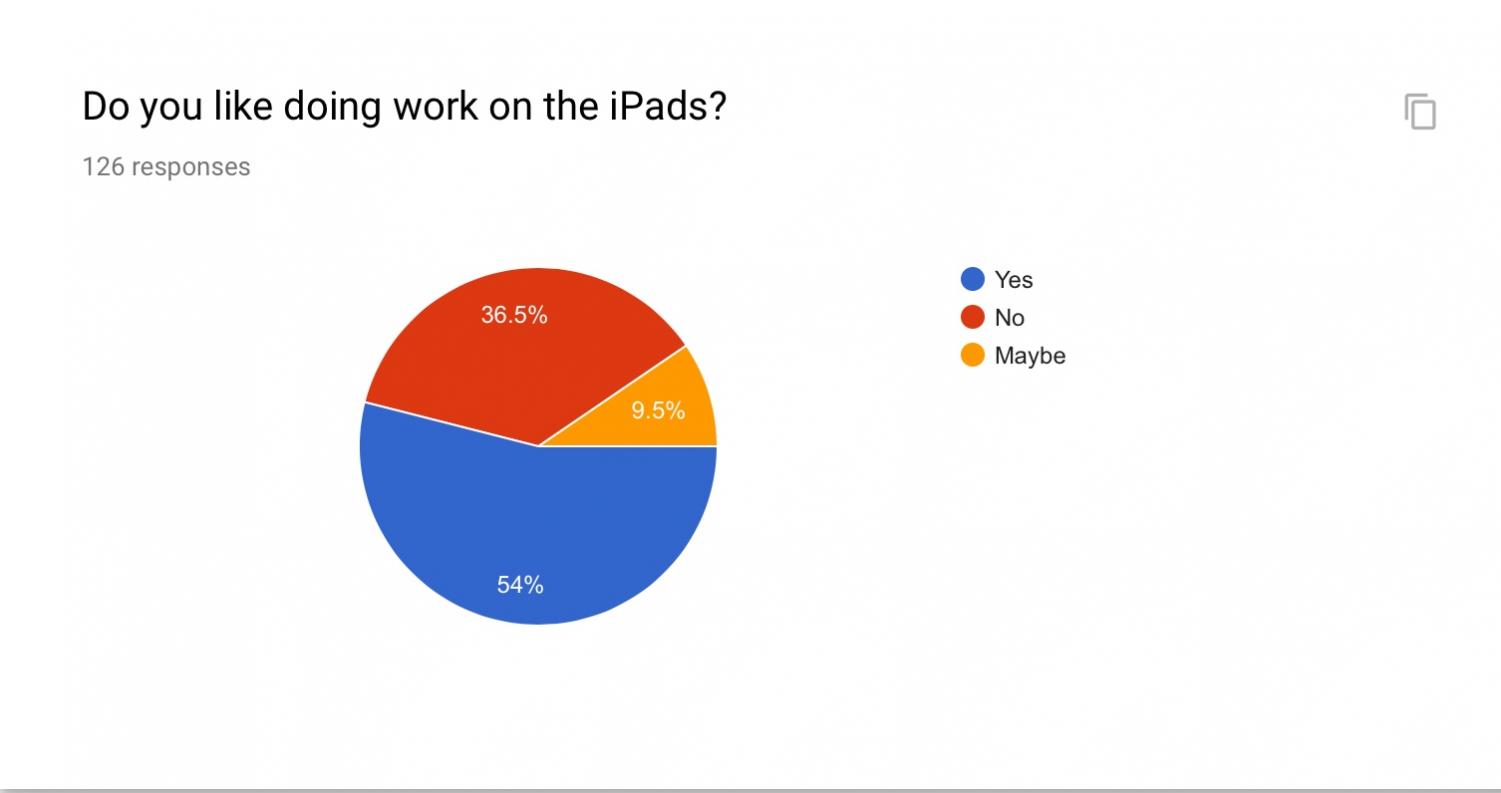
This pie chart represents how many students like doing work on the iPads and how many don’t. As you can see, most kids in the 8th grade like using the iPads to do work, but when asked some say that they don’t like the iPads.
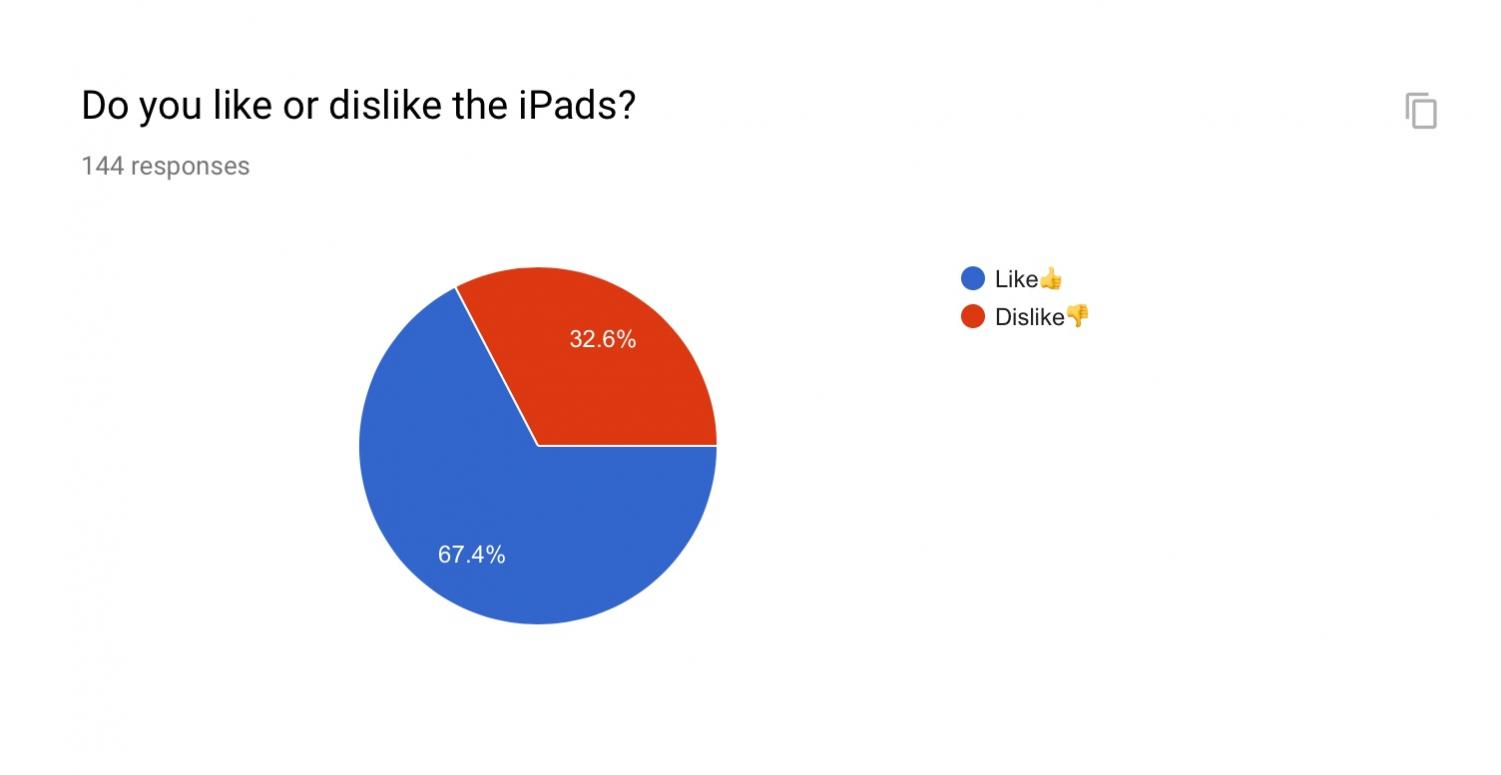
The second pie chart shows that 67% of the students like iPads and 32% of the students dislike the iPads. This information is shocking due to the fact that most students talk about not liking the iPads.
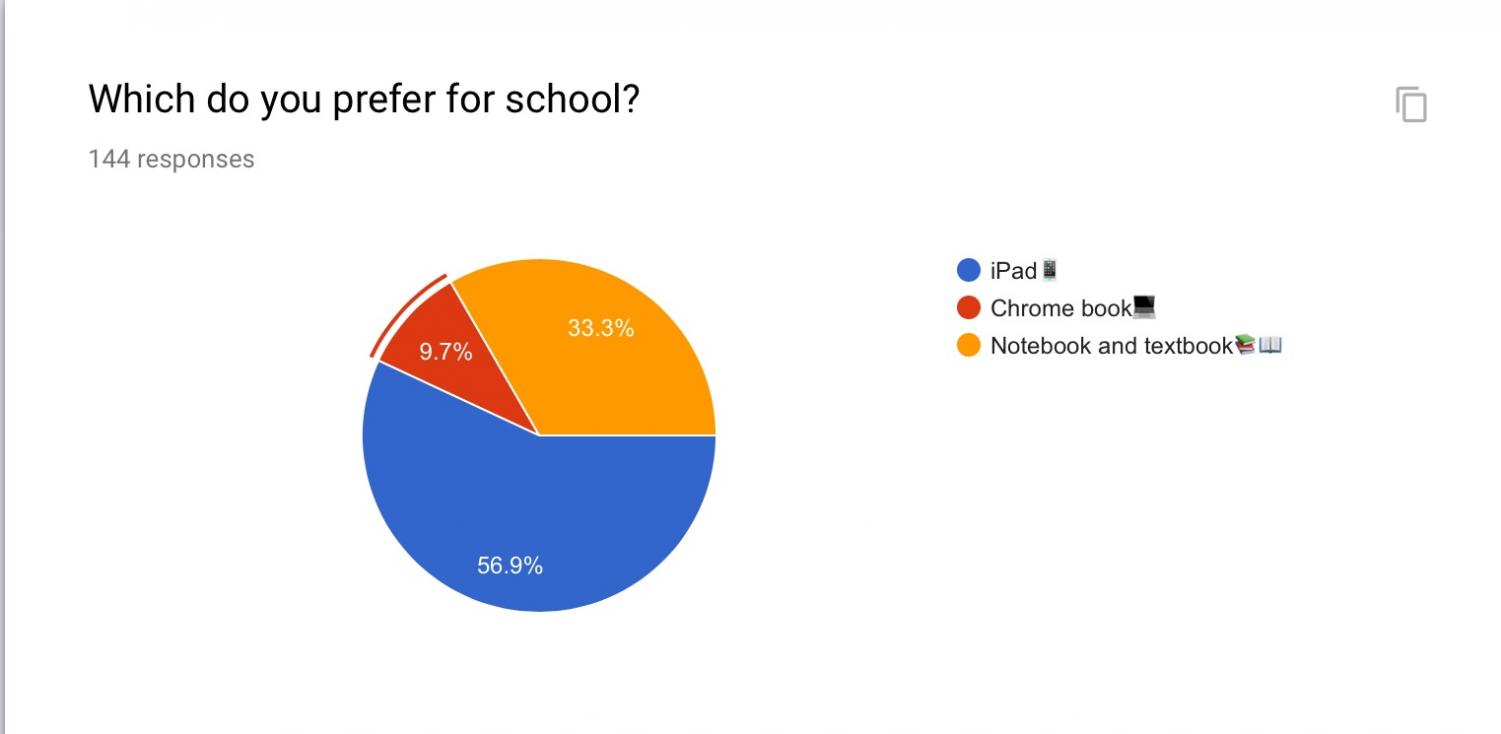
The third pie chart conveys what the students prefer using for school, 56% say iPads, 33% say notebooks and textbooks, and 9% say chromebooks.
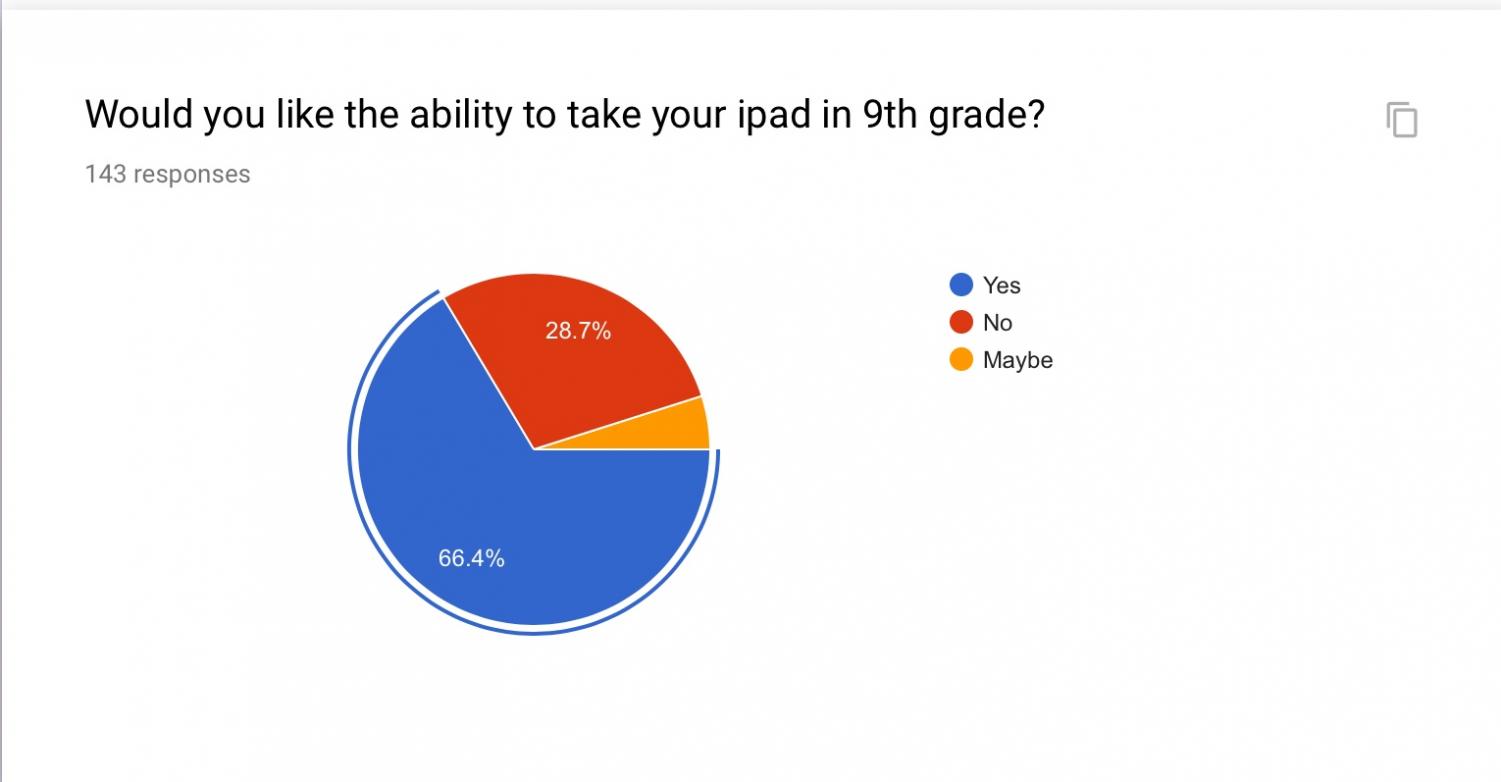
The fourth pie chart asks if students would like the ability to take their iPads to high school; most students say they would like to take the iPads to high school. Others say they wouldn’t like to take it to high school. A few students might like to take them to high school.
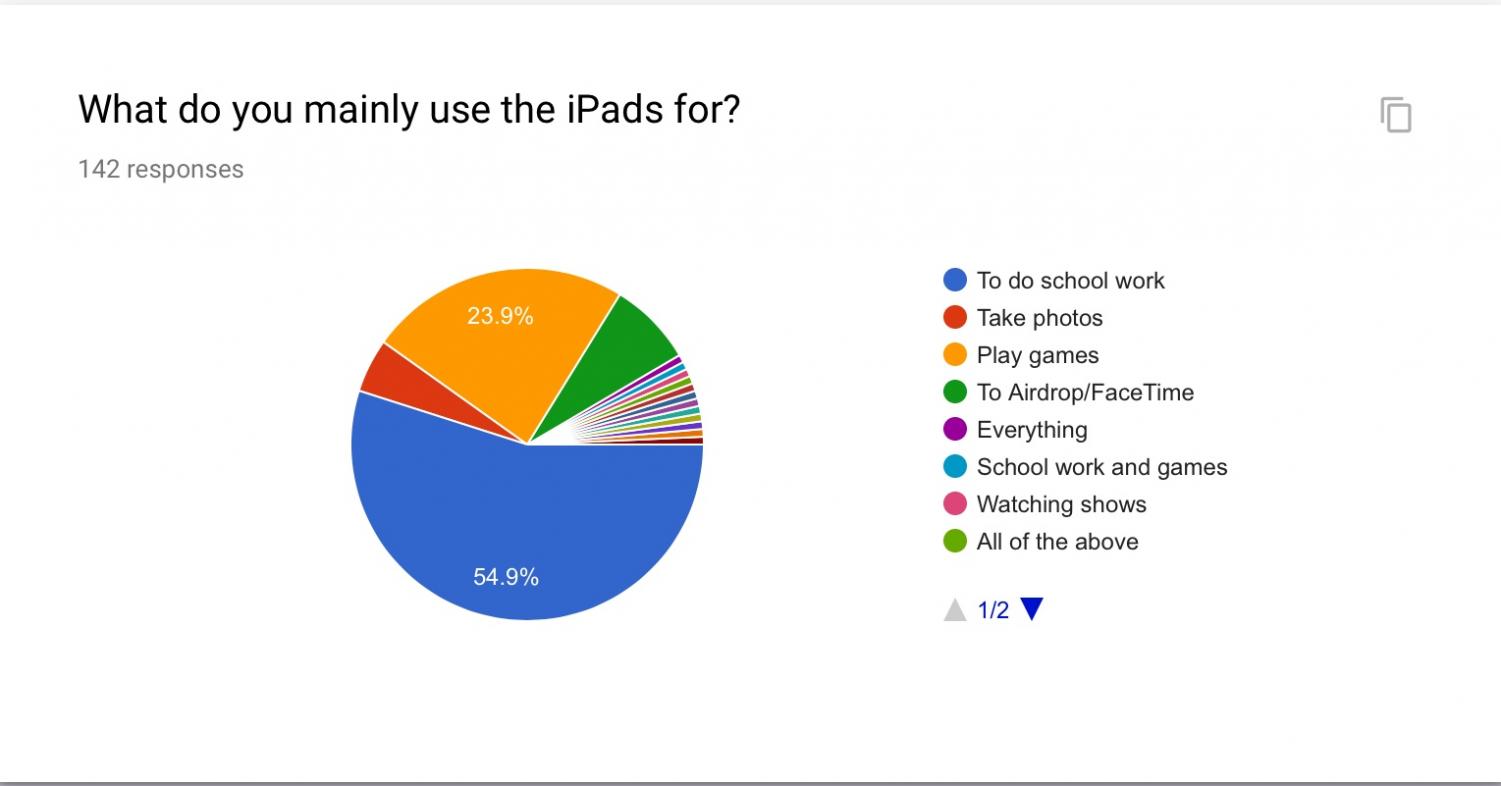
The last pie chart asks students what they mainly use the iPads for; most students use them for school and work and others use it for most things they aren’t supposed to use it for like FaceTime, games, and watching movies.


